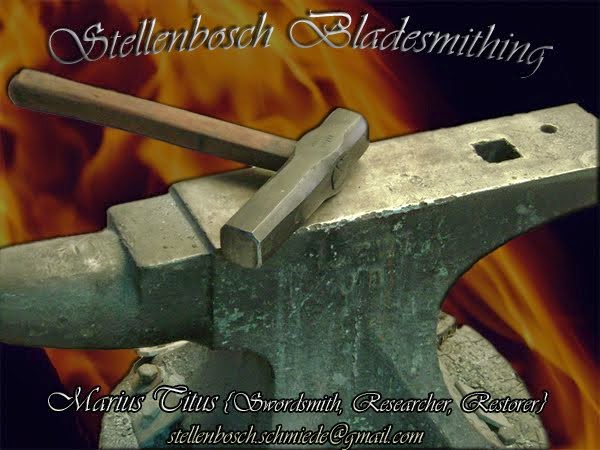Wednesday 30 July 2014
Forging hammers
The 45mm diameter piece of axle is slit from both sides so that the holes meet in the middle. The key to not getting the slitting chisel stuck is to keep changing the angle upon each strike, thereby creating a hole slightly larger than the chisel itself. Also, cool the chisel after about three strikes and roll the wet chisel in ash to form a powdery lubricant.
The slit should be longer than the diameter of the drift used to define the form of the eye.
The latest set.
For this project the forge was run on anthracite, useful for heavy forging. The side-blown design prevents clogging that is a bit of a headache in the more conventional bottom blown forge. An extra brick wall was put up to retain the heat better.
Tuesday 29 July 2014
Longsword pictures
This sword is quite nimble in the hand due to the hollow ground blade. It tracks well in both onehanded and twohanded use. Now to pack it for shipping.
Monday 28 July 2014
The last phases in the making of the German longsword.
The guard is fitted snugly and peened up agaist the tang to secure it permanently. The pommel is also fitted and peened over a pommel nut.
The beech grip core is carved to fit the tang and planed to final shape before being glued into place.
The wooden grip core is wrapped in cord and the leather risers glued in place.
A few grams of hide glue is prepared to an exact ratio of glue to water and applied to the cord wrapped grip before a piece of leather is pinned into place for a test fit before being cut to the exact shape and size needed.
The leather is then thinned, the four edges skived very thin, dampened to soften it, and then glued into place. The grip is then wound with cord to press the leather down while it dries for a snug fit. Working with hide glue does call for meticulous planning ahead as it gels rather rapidly in cold and damp weather and if you overheat it, it weakens. In the end, here is the sword.
Subscribe to:
Posts (Atom)
























